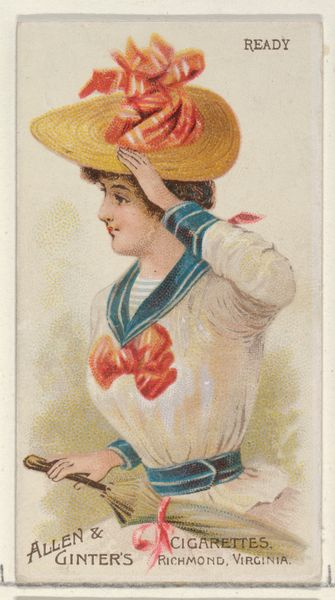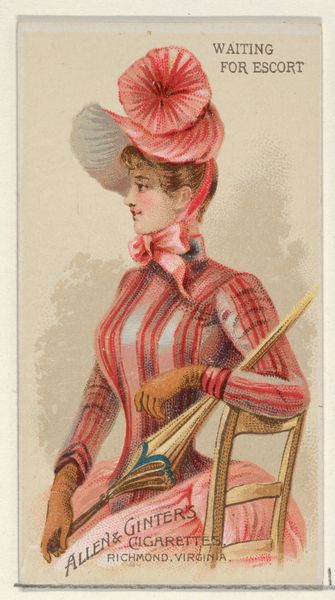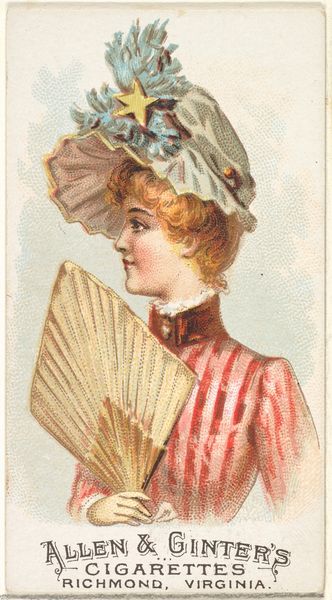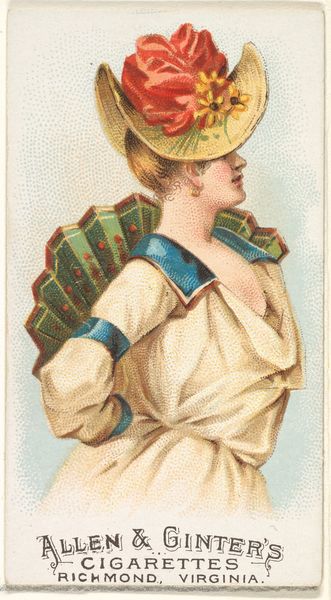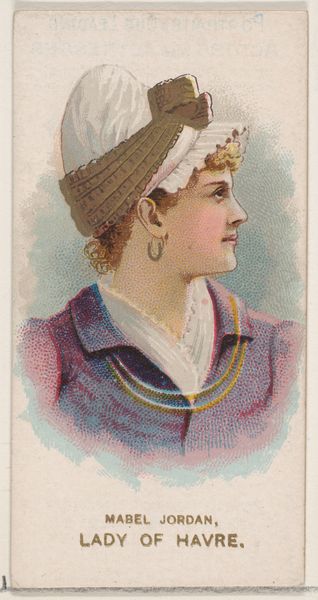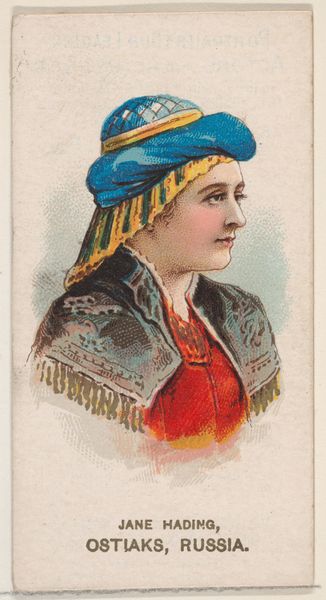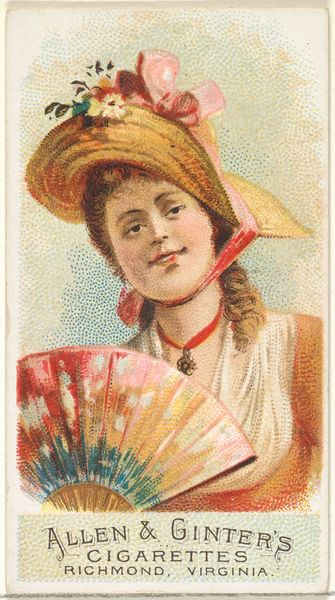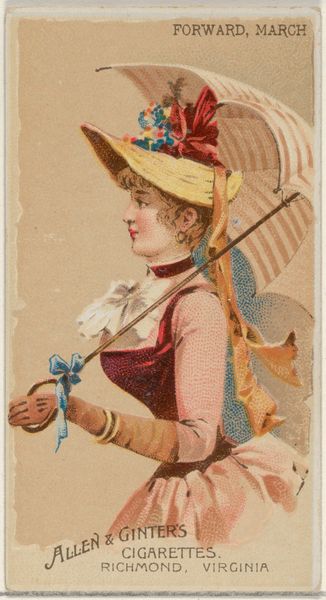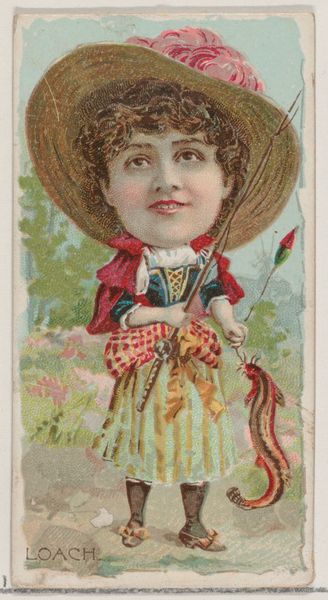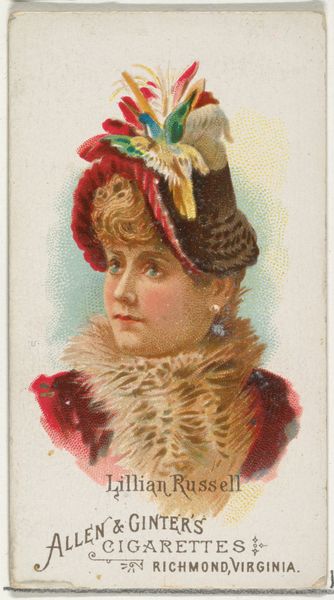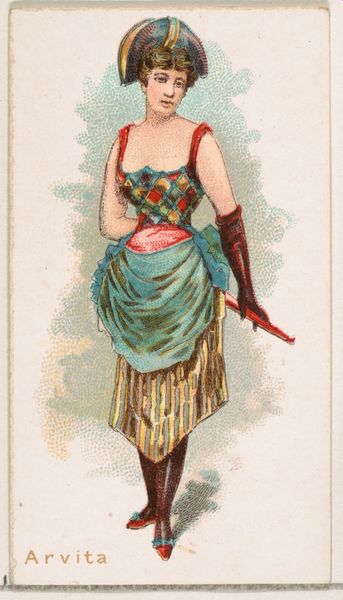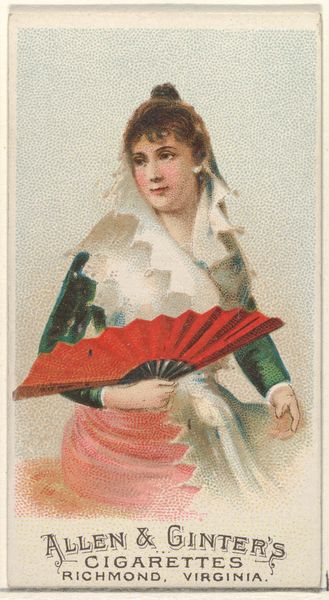
Mme. Rhea Dressed in Sunday Clothes from the Island of Walgheren, Zealand, Holland, from the set Actors and Actresses, Second Series (N71) for Duke brand cigarettes 1888 - 1890
0:00
0:00
drawing, coloured-pencil, print
#
portrait
#
drawing
#
coloured-pencil
# print
#
caricature
#
coloured pencil
#
genre-painting
#
academic-art
Dimensions: Sheet: 2 3/4 x 1 1/2 in. (7 x 3.8 cm)
Copyright: Public Domain
Curator: The object before us is from a series of cigarette cards by W. Duke, Sons & Co., dating between 1888 and 1890. It is titled "Mme. Rhea Dressed in Sunday Clothes from the Island of Walgheren, Zealand, Holland." These were collectible cards inserted into cigarette packs, showcasing actors and actresses in costume. Editor: It's such a delicate rendering. I’m immediately drawn to the contrasts – the stark profile against a muted background, and that wonderful, almost geometric layering of fabrics. It creates a very captivating visual tension. Curator: Indeed. Beyond its formal appeal, it speaks volumes about cultural identity and representation. The work documents regional Dutch dress, specifically from the island of Walcheren. This costume, though meticulously rendered, presents a singular, perhaps idealized view of this community. It makes one wonder about the power dynamics inherent in observing and portraying ‘otherness.’ What choices were made? What narratives were omitted or emphasized for this 19th-century consumer audience? Editor: The close hatching of the colored pencils definitely softens the edges and forms and adds a level of textural complexity to each individual part of her clothing that could easily be overlooked, but the more time you spend looking the more the patterns of the woven textures resolve out of the general blend of color and shape. It definitely rewards attentive examination. Curator: And there’s a potent class element at play too. These cards were marketed to a broad consumer base. To what extent does such commercialization influence our understanding of regional cultures and class differences? Also the very premise of portraying ‘actresses in costume’ encourages the consideration of artifice and performance. Who *was* Mme. Rhea, and what social structures are at work to allow her to be displayed on such a trivial object? Editor: A closer examination of her garments reveals a meticulous hand in defining each textile, with a fine awareness of color and shape. Despite the limited space, there's depth, texture, and even subtle movement. I'm struck by how much the artist has communicated within this small frame, offering a microcosm of skillful illusion. Curator: It is this tension—between cultural signifier, performance, commodification and technical skill—that makes this small card unexpectedly resonant. Editor: Precisely. It's a lesson in close-looking; sometimes, the most profound discoveries are made when we turn our gaze toward the overlooked.
Comments
No comments
Be the first to comment and join the conversation on the ultimate creative platform.
